Worksheet Solutions: Drop By Drop - 2 | EVS for Class 3 PDF Download
Q1: Multiple-Choice Questions (MCQs).
(i) What is a family?
(a) A group of friends
(b) A group of people related by blood, marriage, or adoption
(c) A group of animals
(d) A group of plants
Ans: (b)
A family, in human context, usually refers to a group of people related by blood, marriage, or adoption.

(ii) Why is the roof of the house designed to be slanted in the context?
(a) To let the rainwater flow into the tanka
(b) To protect the house from sunrays
(c) To make the house look bigger
(d) To provide shade
Ans: (a)
The roof of the house is slanted to guide the rainwater into the tanka through a pipe for storage.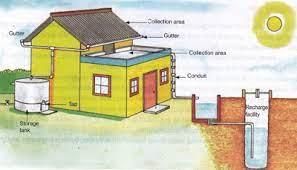
(iii) What is the main issue faced by Sonal and her community?
(a) Electricity shortage
(b) Water shortage
(c) Food shortage
(d) Housing shortage
Ans: (b)
Sonal and her community face a serious issue of water shortage, with water being available only for half an hour per day.
(iv) Where is Madho from in the story "Drop by Drop"?
(a) Bhavnagar
(b) A Rajasthani village
(c) Bajju
(d) A sandy desert
Ans: (c)
Madho is from Bajju, a small Rajasthani village.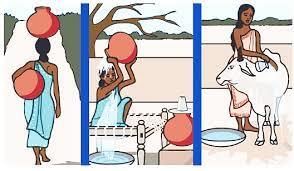
(v) How do people in Madho's village collect and store rainwater?
(a) They buy water from a nearby town.
(b) They use tankers to transport water.
(c) They store rainwater in underground tanks or tankas.
(d) They rely on a single tap for water supply.
Ans: (c)
The people in Madho's village collect and store rainwater in underground tanks known as tankas.
Q2: Fill in the Blanks.
(i) What is a 'tanka'?
Ans: An underground tank for storing rainwater
'Tanka' refers to an underground tank commonly used for storing rainwater.
(ii) Why is it important to reuse water?
Ans: To prevent water scarcity
Reusing water is an effective way to conserve it, which can help in preventing water scarcity.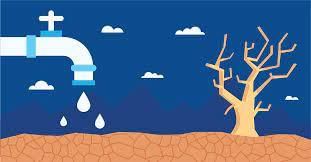
(iii) What does the phrase "every drop counts" suggest?
Ans: Each small amount of water saved can make a big difference
The phrase "every drop counts" emphasizes that even small actions to conserve water can contribute significantly to alleviating water scarcity.
(iv) Madho and his family members were upset about the __________ scarcity in their village.
Ans: water
The sentence mentions that Madho and his family were upset about the water scarcity.
(v) People of Madho's village used to collect and store rainwater in underground tanks, also known as __________.
Ans: tankas
The blank is filled with "tankas," which are mentioned as the storage structures for rainwater.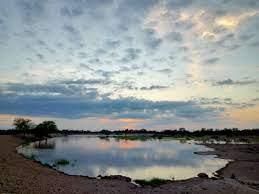
Q3: True or False.
(i) Water is used for recreational activities.
Ans: True
Water is commonly used for recreational activities such as swimming, boating, and water sports.
(ii) Leaving the tap running while brushing teeth is a way to save water.
Ans: False
Leaving the tap running while brushing teeth is a wasteful use of water and does not save it.
(iii) Water is important for the survival of all living beings.
Ans: True
Water is essential for the survival of all living beings, including humans, animals, and plants.
(iv) Madho's family is happy about the water supply in their village.
Ans: False
Madho and his family are upset about the water scarcity in their village, so they are not happy with the water supply.
(v) Tankas are used to store rainwater underground.
Ans: True
Tankas are structures used to store rainwater underground, as mentioned in the story.
Q4: Answer the following Questions.
(i) Can you think of ways of saving water? Write your suggestions below.
Ans: Here are a few water-saving suggestions:
- Never leave a water tap running.
- Do not leave the tap or shower running while brushing your teeth or taking a bath.
- Instead of taking a shower, fill a bucket with water and take a bath.
- After you've finished washing your clothes, you can reuse the waste water to clean your washroom.
- Any water that is left over can be used to water plants in the garden.
- If there is a water leak, get it fixed as soon as possible.
- Water should be recycled whenever possible.
(ii) Is it possible to reuse water that has been used for one purpose?
Ans: Yes, we can reuse the water that has already been used. Bathing water, for example, can be used to bathe animals.
(iii) After washing hands and face, used water can be reused as?
Ans: That water can be used in washing clothes, bathing animals, etc.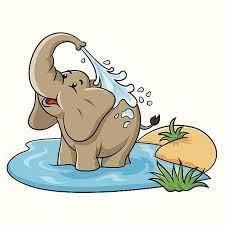
(iv) Where do the people in Madho's village get their drinking water?
Ans: From the underground tanks.
(v) What was the main reason for water scarcity in Bajju Village?
Ans: No rains for a longer period of time caused the scarcity in Bajju’s Village.
|
45 videos|182 docs|48 tests
|
FAQs on Worksheet Solutions: Drop By Drop - 2 - EVS for Class 3
| 1. What is the importance of water conservation? |  |
| 2. How can I conserve water at home? |  |
| 3. What are the consequences of water scarcity? |  |
| 4. How does water pollution affect our environment? |  |
| 5. What are some effective water conservation strategies for agriculture? |  |
















